Creating a personal home art gallery is a fun and fulfilling way to express your taste and style. Transform your living space into a vibrant showcase of creativity that reflects who you are. Whether you are a seasoned collector or just starting to gather art, there are plenty of ways to make your walls come alive with your favorite pieces.
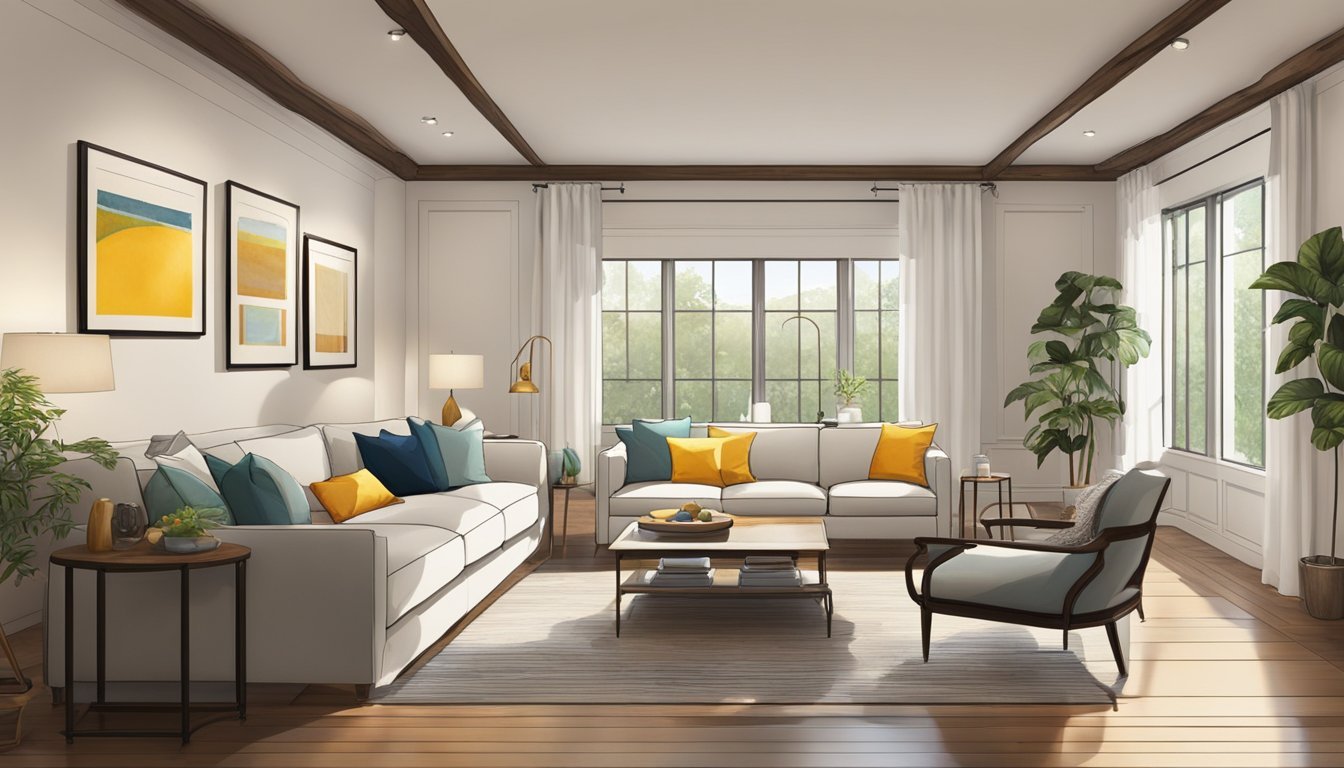
From choosing a theme to finding the perfect layout, displaying art can turn your home into a unique narrative of your personality.
You don’t need to be an expert; just a passion for art and a bit of creativity will go a long way.
Let’s explore some straightforward ideas to help you embark on this enjoyable decorating journey.
Choose art that resonates with you
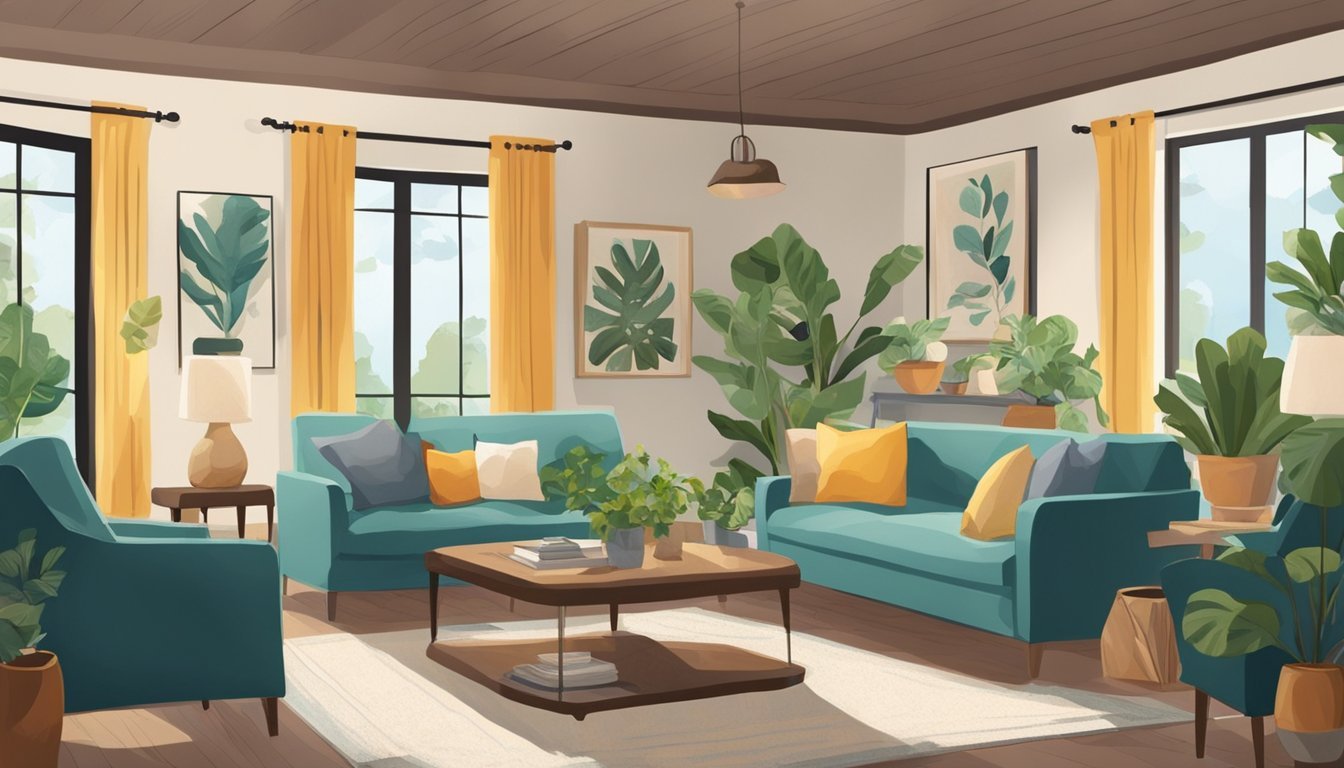
When selecting artwork for your home, start by focusing on what truly speaks to you.
Think about the colors, styles, and themes that attract your attention.
This connection can turn a simple wall into a personal statement.
Trust your instincts as you browse different pieces.
If something catches your eye and you can’t stop thinking about it, that’s a strong sign it resonates with you.
Your home should reflect your unique personality.
Consider your experiences and memories when choosing art.
Perhaps a piece reminds you of a favorite trip or a special time in your life.
This emotional tie can make art feel even more meaningful in your space.
Explore various styles to find what aligns with you.
Whether you prefer modern minimalism or vibrant classic pieces, your choices should feel authentic.
Don’t hesitate to mix and match different styles that you love—there’s no wrong way to create your gallery.
Lastly, take your time.
Creating a personal art collection is a journey, not a race.
Enjoy the process of discovering pieces that make you smile and add character to your home.
2) Mix different styles and periods
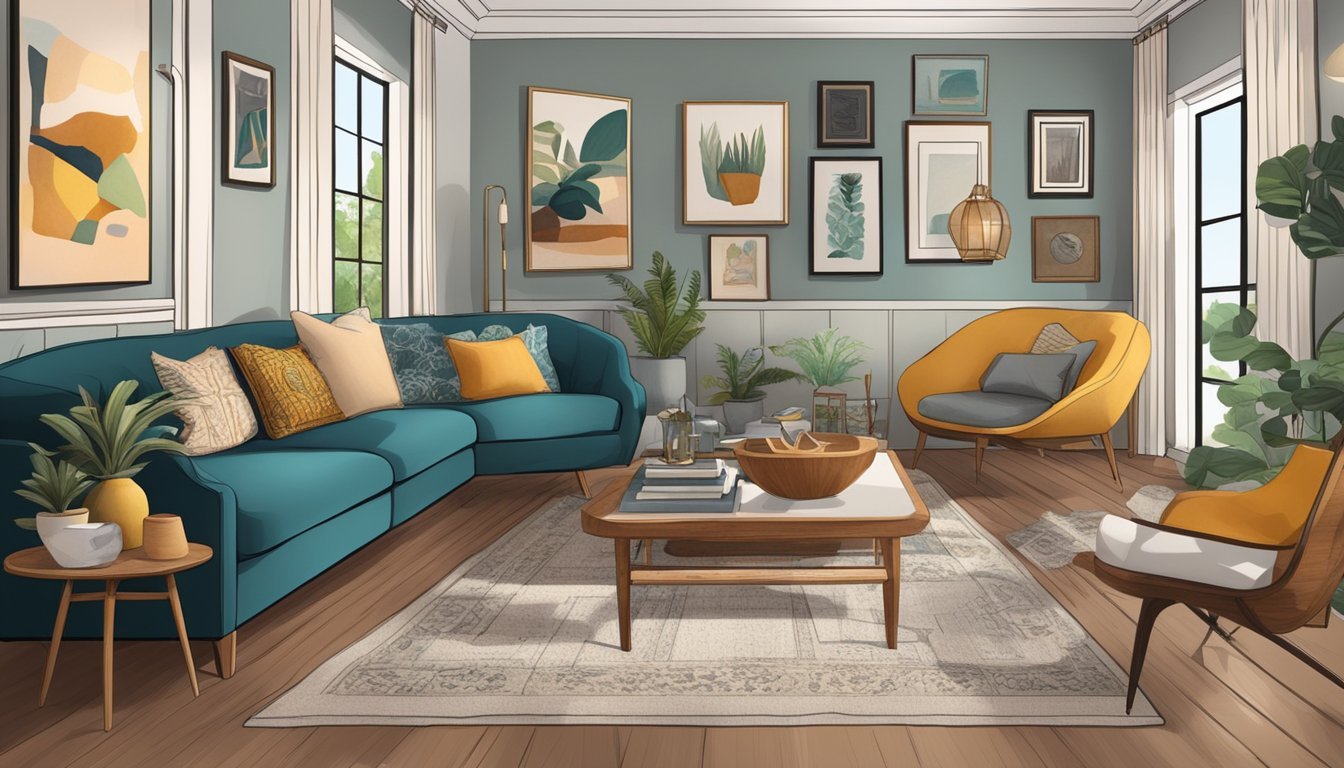
Mixing different styles and periods can add character to your home art gallery.
It allows you to create a space that reflects your unique taste and personality.
Start by choosing pieces that resonate with you, regardless of their origin.
You might pair a contemporary abstract painting with a vintage landscape.
This contrast not only highlights the individuality of each piece but also creates an engaging visual story.
Consider the color scheme and size when selecting artwork.
Keeping similar sizes can help unify diverse styles.
For example, a bold abstract work can be complemented by a black-and-white photograph.
Frames can also play a significant role in blending styles.
Opt for frames that have a similar aesthetic, whether vintage or modern.
This helps to tie the different artworks together, enhancing their collective impact.
Don’t shy away from including personal items, like travel souvenirs or family heirlooms.
They can add depth and meaning to your collection while enriching the overall experience of your home gallery.
Mixing styles and periods is all about finding harmony in diversity.
3) Use varied frame designs
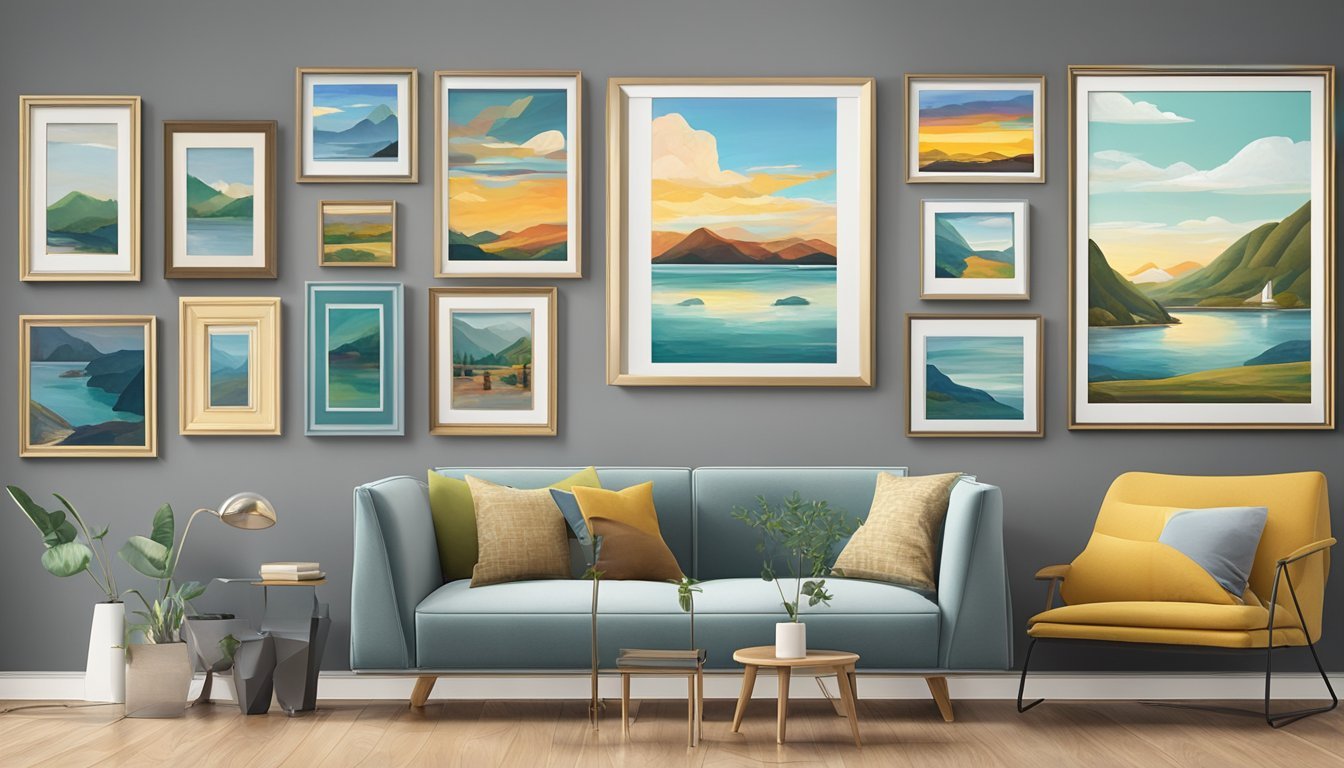
Mixing different frame styles can add character to your gallery wall.
Don’t feel boxed in by uniformity; diversity can make your art pop.
Consider combining modern frames with vintage ones.
The contrast draws attention and creates visual interest.
You can also play with colors—bold frames against neutral art can create a striking look.
Think about texture, too.
Wooden frames paired with metal ones add depth and dimension.
This layering effect makes your space feel more dynamic and inviting.
Remember to keep the scale in mind.
Blend small and large frames to create a balanced look.
This variation will prevent the wall from feeling flat or overwhelming.
A well-curated mix can tell a story.
Each frame acts as a unique accent, enhancing the overall vibe of your personal art gallery.
Enjoy the process of experimenting with different designs and see what resonates with you.
4) Create a focus wall
A focus wall can transform any room and highlight your favorite pieces.
Start by selecting a wall that stands out, like one with good lighting or a unique color.
Choose artwork that speaks to you.
Mixing different styles and sizes creates interest.
You can include framed photos, paintings, and even smaller decorative items.
Arrange your pieces thoughtfully.
You might center a large artwork and arrange smaller pieces around it.
This draws the eye and creates a cohesive look.
Consider the surrounding decor.
Keep it simple to let your focus wall shine.
Avoid cluttering the space with too many items that compete for attention.
If you’re not sure about the arrangement, use painter’s tape to outline where each piece will go.
This helps visualize the grouping before you hang them.
Don’t hesitate to change things up.
Your focus wall can evolve as you find new art or rearrange existing pieces.
Enjoy the process of showcasing your personal style!
5) Incorporate sculptures
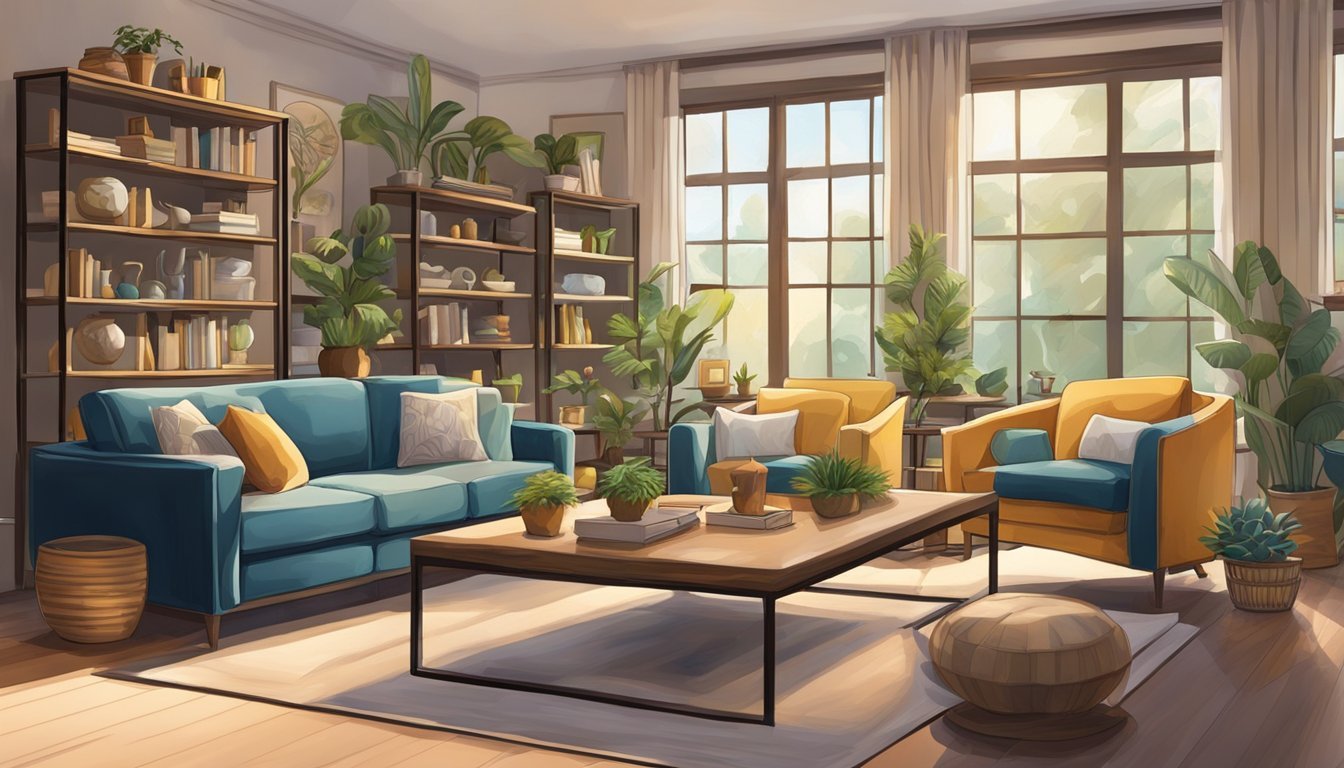
Sculptures can add depth and personality to your home art gallery.
They create a three-dimensional element that paintings simply can’t match.
Start small if you’re new to sculpture.
A few ceramic pieces or small abstract forms can make a striking impact on a console table or shelf.
Mixing different materials and textures can create visual interest.
Consider the placement of your sculptures.
Strategic locations, like entryways or living rooms, can ensure they stand out without overcrowding your space.
Don’t shy away from personal preferences.
Choose pieces that resonate with you, regardless of style.
Whether sleek and modern or quirky and playful, your choices reflect your personality.
You might also explore incorporating larger sculptures, but balance is key.
Make sure they complement the surrounding decor without overwhelming it.
Experiment and have fun with your sculptures.
Group a few together for an eye-catching arrangement or let a single statement piece shine on its own.
Highlight with good lighting
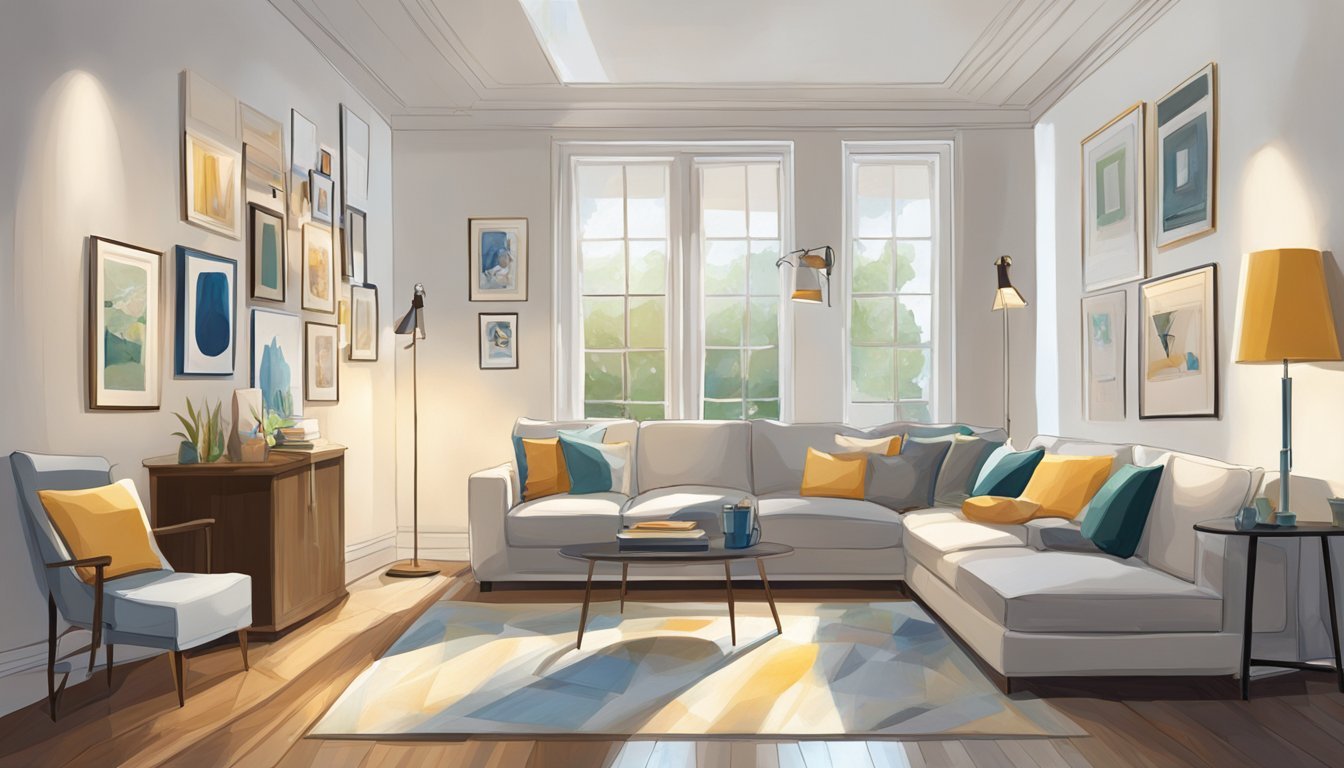
Good lighting can transform your art collection into a stunning display.
Properly showcasing your artwork requires thoughtful placement and the right type of light.
Use a combination of ambient and accent lighting.
Ambient light provides overall illumination, while accent light highlights specific pieces.
Track lighting is a great option since you can direct the beams toward your art.
Position fixtures at a 30- to 45-degree angle to minimize glare and shadows.
This approach allows you to illuminate the textures and colors of your artwork effectively.
Choose light fixtures based on the size of your pieces.
For example, smaller works may need smaller fixtures, while larger pieces benefit from larger fixtures to create a balanced look.
Using dimmers can enhance the atmosphere.
Adjusting the light intensity helps you set the mood and focus on different aspects of the artwork.
Be mindful of the type of bulbs you use.
Avoid lights that emit too much UV radiation, which can damage your pieces over time.
Consider LED lights as they open up options for brightness without excessive heat.
7) Rotate artwork regularly
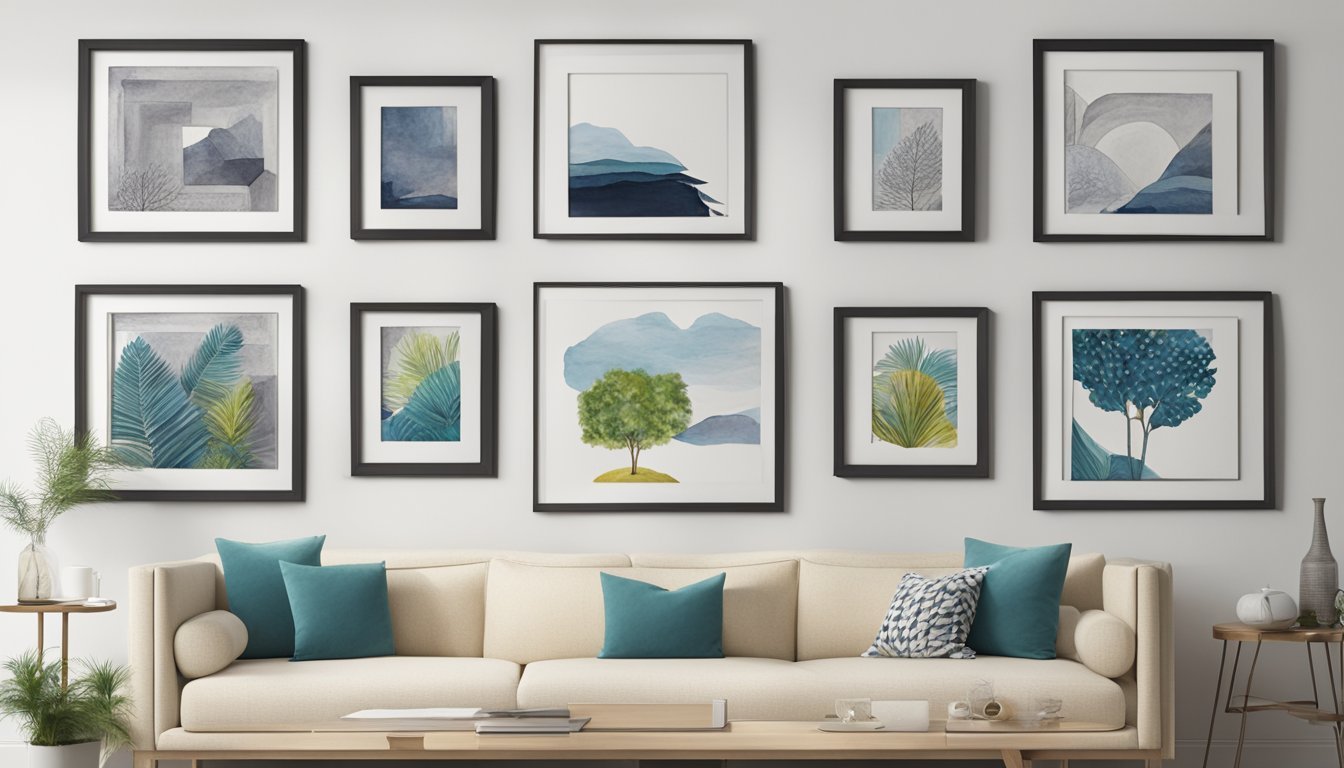
Rotating your artwork keeps your home gallery fresh and engaging.
It’s easy to fall into a routine where you stop noticing pieces you once loved.
Changing things up allows you to appreciate your collection in new ways.
It can bring different colors and moods into your space, depending on what you choose to display.
Try to schedule regular rotations, like every few months.
This practice also lets you show off more of your artwork over time.
When you take down pieces, consider how they look in various rooms.
You might find that certain works fit better in different spaces or seasons.
Mix in personal items, like family photos or your own creations.
This can create a unique atmosphere that reflects your personality.
Regularly refreshing your display not only beautifies your space but also keeps the experience exciting.
You may rediscover pieces that inspire you all over again.
Choosing the Right Space
Selecting the right space for your home art gallery is crucial in showcasing your collection effectively.
Consider both lighting and wall utilization to create an inviting atmosphere that highlights your artwork.
Lighting Considerations
Lighting plays a pivotal role in how artwork is perceived.
Natural light can add warmth, but be cautious; too much sun can fade colors over time.
Tip: Aim for spaces where you can control light levels.
Consider using adjustable track lighting or wall-mounted fixtures to illuminate your pieces without glare.
Warm white bulbs often provide the most flattering effect, enhancing color tones and textures in the artwork.
If possible, place your artworks near windows but avoid direct sunlight.
This balance helps in showcasing the art beautifully without causing damage.
Wall Space Utilization
Effective wall space utilization can dramatically change the ambiance of your home gallery.
Start by selecting walls that are large enough to accommodate your artwork.
Tip: Use a measuring tape to plan your layout before hanging anything.
You can group smaller pieces together or showcase a single large piece to create a focal point.
Consider the height at which to hang your art: ideally, it should be at eye level.
If you’re hanging multiple pieces, maintain consistent spacing between them, typically 2-4 inches apart, to create a cohesive look.
Don’t overlook the option of using shelves or ledges for a dynamic display that allows for easy rotation of pieces.
Selecting Artworks
Choosing the right artworks is key to building your personal gallery.
This step allows you to express who you are while complementing your home’s aesthetic.
Focus on different art styles and consider curating around a specific theme.
Different Art Styles
Understanding diverse art styles can help you select pieces that resonate with you.
Here are a few to consider:
- Abstract: These pieces often use colors and shapes to evoke emotions. They can energize a space and ignite conversations.
- Classic: Timeless artworks, such as landscapes or portraits, bring a sense of tradition. They can ground your gallery in history.
- Contemporary: This style reflects current trends and can make your space feel fresh and modern.
- Photography: Adding photographic prints can introduce a personal touch. Choose images that matter to you, whether they are landscapes or candid moments.
Mixing styles can add depth to your collection, making it visually engaging and uniquely yours.
Curating a Theme
Creating a cohesive theme ties your gallery together.
It guides your selection process and enhances the visual impact.
Here are practical approaches:
- Color Palette: Choose artworks featuring a specific color scheme. This creates harmony across your display.
- Mood: Decide on the emotional atmosphere you want. Whether it’s calming or energizing, let this dictate your choices.
- Subject Matter: Focus on a common topic, like nature or urban scenes. This can give your gallery purpose.
Consider using larger pieces as focal points while surrounding them with smaller works.
Experiment with layouts using paper cutouts to visualize the arrangement before hanging.
This attention to detail will help you create a personal gallery that feels cohesive and inviting.
Displaying Your Collection
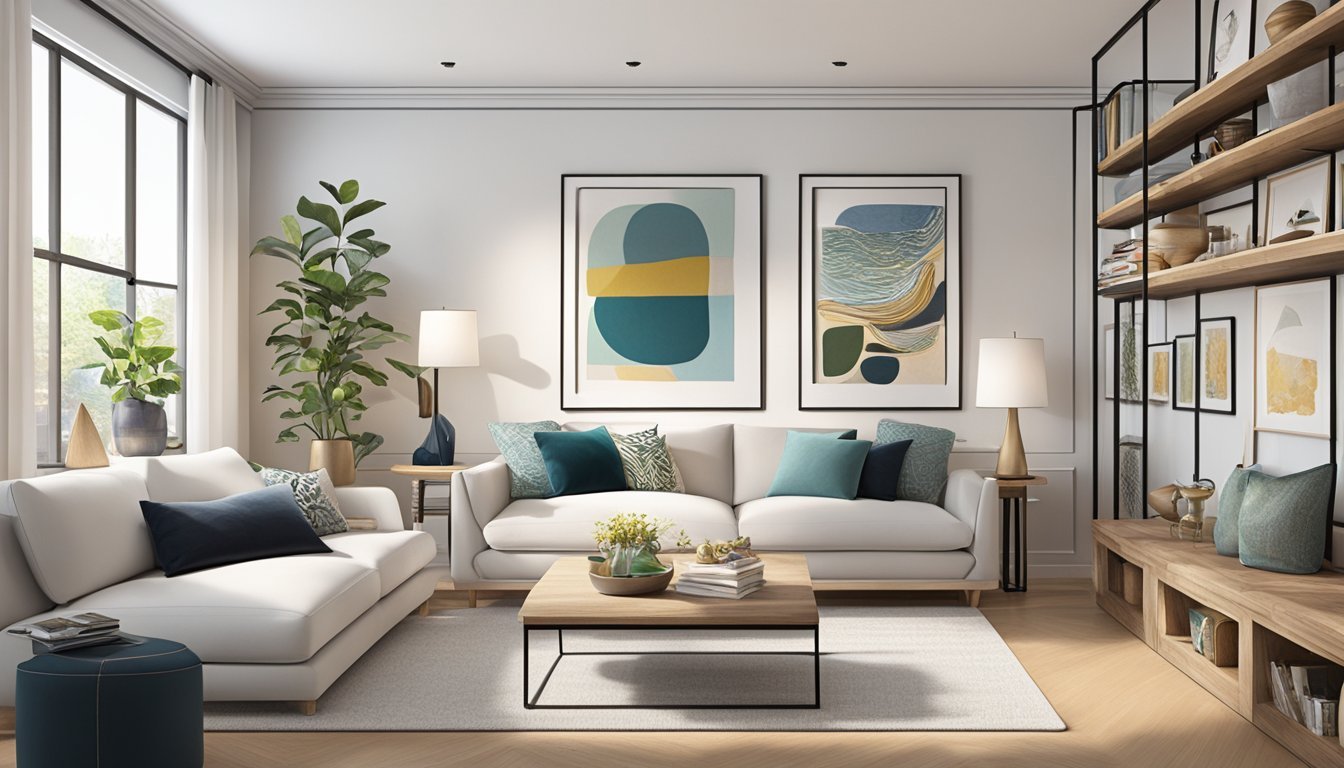
Creating an engaging display for your art collection involves thoughtful framing, hanging techniques, and the option of rotating your pieces.
These elements not only enhance the visual appeal but also allow you to keep your art fresh and interesting.
Framing and Hanging Tips
The right frame can elevate any artwork.
Choose frames that complement the style of the art itself.
For instance, modern pieces often look great in sleek, minimal frames, while traditional works might benefit from more ornate framing.
When you hang your art, consider these key points:
- Eye Level: Hang art at eye level for the best viewing experience. This is typically 57-60 inches from the floor.
- Spacing: Maintain uniform spacing between frames. About 2-4 inches apart works well.
- Grid Layout: For a clean look, arrange smaller pieces in a grid. This offers a structured and cohesive display.
Rotating Art Displays
Changing up your art regularly keeps your space feeling dynamic.
Here are some simple strategies to rotate your collection effectively:
- Seasonal Themes: Swap out art based on the season. Bright colors can energize your space in spring and summer. Meanwhile, warmer tones can cozy it up in fall and winter.
- Highlight New Finds: If you acquire new pieces, give them a spot to shine. Rotate older items to create a fresh narrative in your gallery.
- Use Shelves: If you have shelves, consider leaning art instead of hanging it. This allows for easy swapping without making new holes in the wall.


